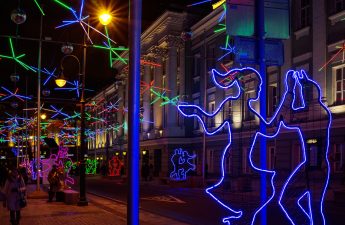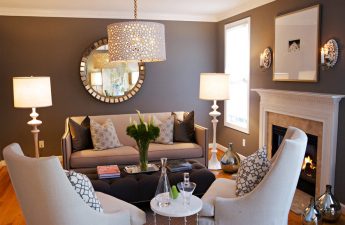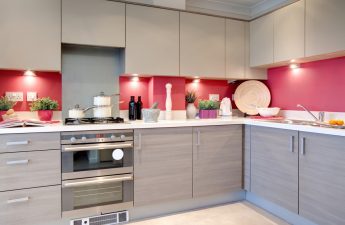They call themselves architects of light, they amazeworld with futuristic handmade lamps and confess their love for Russians. One of the founders of the Dutch Brand van Egmont spoke about the secrets of lighting fashion and the tastes of Russian clients. The Dutch architect William Brand and sculptor Annette van Egmond twisted their first lamp from ordinary steel wire in 1988. And it immediately became a design icon. Since then, "technological light painting" from Brand van Egmond has conquered half the world. It is based on the idea of traditional hand-made production, improved by modern technologies and the latest materials. The result is unique lamps, almost each of which can be changed in accordance with the personal needs of the client. There are some in Russia too. Editor-in-chief of etk-fashion.com Oksana Kashenko specially met with William Brand to find out what kind of light our compatriots prefer and what new things Brand van Egmond has come up with to surprise us. William Brand, architect and designer Graduated from the University of the Arts in Utrecht, the Netherlands, with a degree in architecture. In 1989, together with the sculptor Annette van Egmond, he founded the company Brand van Egmond and opened his own workshop, because third-party manufacturers did not want to take on such complex projects. The list of design awards received over these 25 years barely fits on three pages. The founders of the company formulated their goal as “art without limits” and are still convinced that the only thing that can prevent them from realizing the intended object is the imperfection of technical means. brandvanegmond.com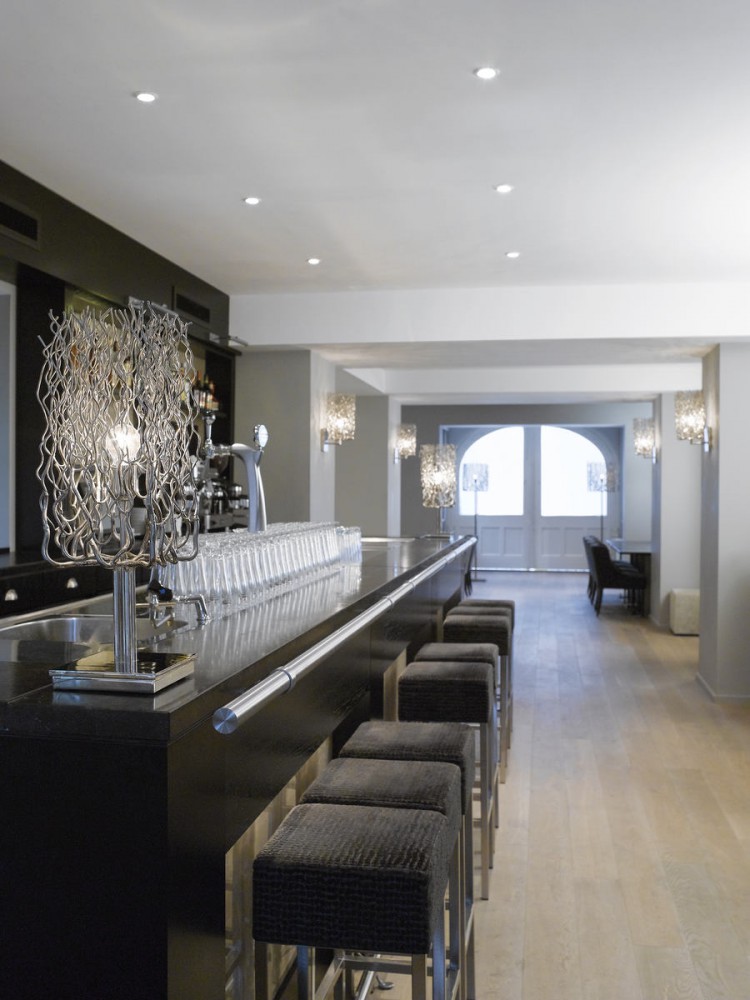

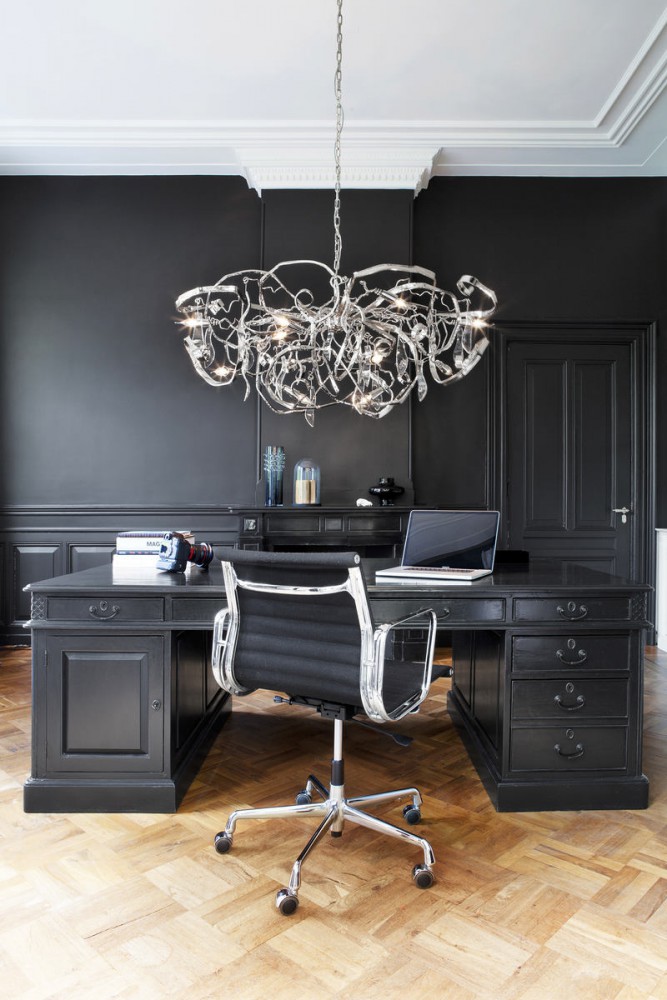 - You are right.Every year I solve a puzzle of sorts. Usually just one. That's enough. Last year, for example, it was this object. A new take on the traditional chandelier, a large pendant light. We called it the kelp chandelier. You know that seaweed?
- You are right.Every year I solve a puzzle of sorts. Usually just one. That's enough. Last year, for example, it was this object. A new take on the traditional chandelier, a large pendant light. We called it the kelp chandelier. You know that seaweed?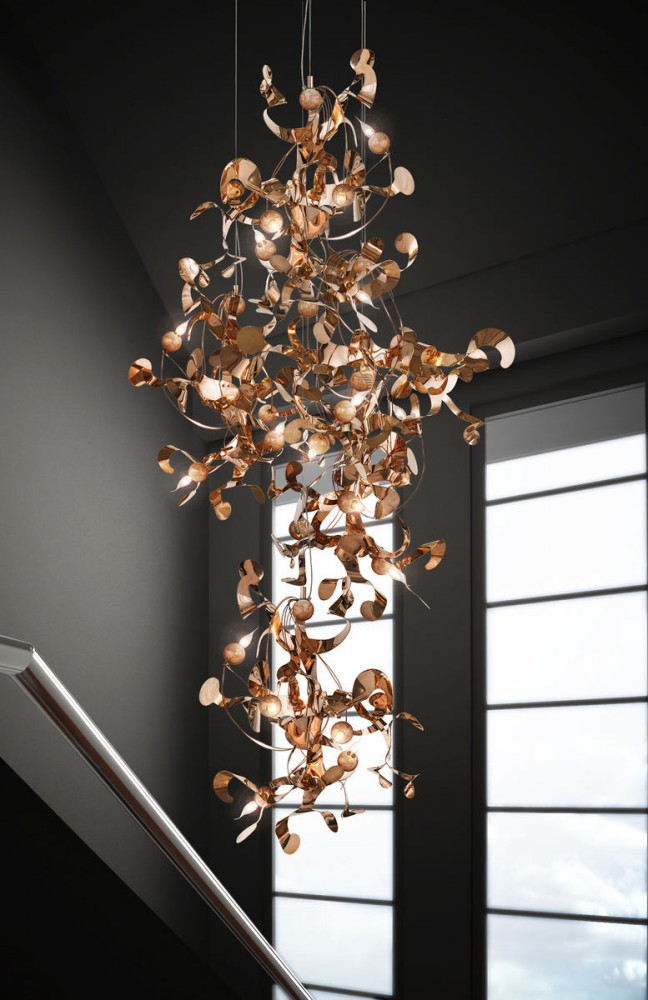

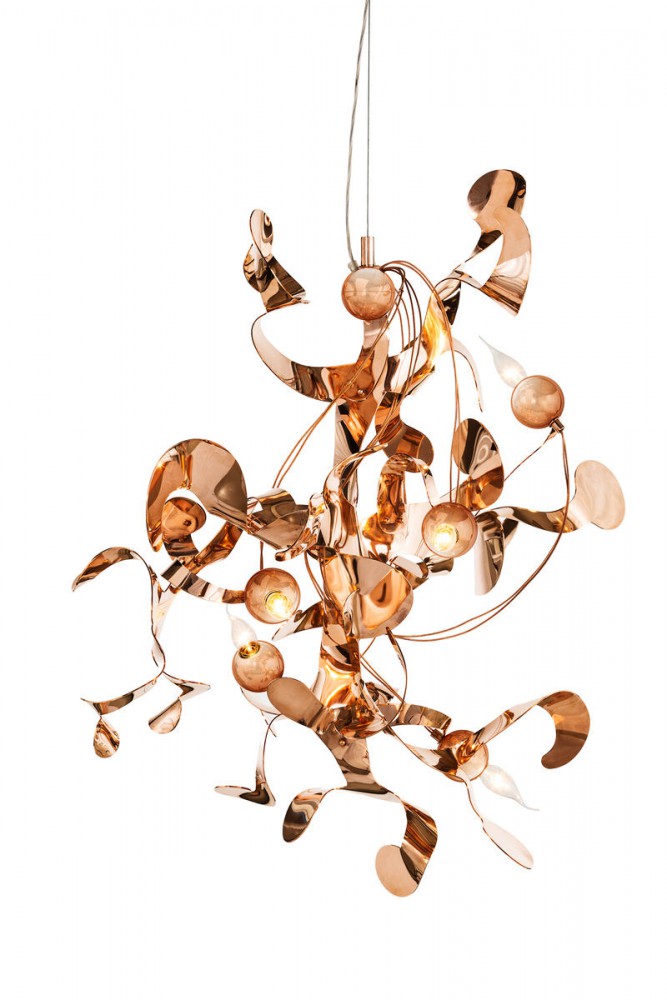 - Of course.Inspiration from nature, as they often say - that's exactly it. Anyone who is familiar with diving will understand. Laminaria sways in the sea, permeated with a trembling light. This moving miracle, which sometimes hides somewhere inside, sometimes blinds your eyes. Simply incredible. This was the impetus, the source of inspiration that gave birth to this form. The idea was a great success. This is exactly how we act - we attract attention, and then we get a return and feedback. Sometimes we use them to create something else. That's how this series appeared. And then we looked around and "refined" it even more, this time playing with color. It became clear to us that houses are becoming colder and colder, because very light or cold shades of floors and walls are in fashion. And we decided to play on contrasts and make the lamps warmer. Hence this red copper. In Europe they love it, but in Russia for some reason they prefer nickel. Although, it probably should be the other way around, it’s colder where you are, isn’t it?
- Of course.Inspiration from nature, as they often say - that's exactly it. Anyone who is familiar with diving will understand. Laminaria sways in the sea, permeated with a trembling light. This moving miracle, which sometimes hides somewhere inside, sometimes blinds your eyes. Simply incredible. This was the impetus, the source of inspiration that gave birth to this form. The idea was a great success. This is exactly how we act - we attract attention, and then we get a return and feedback. Sometimes we use them to create something else. That's how this series appeared. And then we looked around and "refined" it even more, this time playing with color. It became clear to us that houses are becoming colder and colder, because very light or cold shades of floors and walls are in fashion. And we decided to play on contrasts and make the lamps warmer. Hence this red copper. In Europe they love it, but in Russia for some reason they prefer nickel. Although, it probably should be the other way around, it’s colder where you are, isn’t it? - What inspires and motivates youfantasy? — — You could say that I am like a writer, telling stories. My tool is just a little different. Each of my objects has a simple and recognizable image — they are also called archetypes. For example, a ring, a lock, a candle, a stone — something fundamental that touches us on a deep level. That is why, despite the modernity of our lamps, they often send you back in time — they throw a bridge from the last century to a fantastic tomorrow. Like the same chandelier, whose “ancestor” was a medieval castle light. Then I develop the idea, make a sketch and quickly run to the workshop. — — How long can this take? — — It depends on the object. But I try to make the process go quickly. If you drag it out, you rarely get a good design — inspiration is lost while you think over and finish all the nuances and details.
- What inspires and motivates youfantasy? — — You could say that I am like a writer, telling stories. My tool is just a little different. Each of my objects has a simple and recognizable image — they are also called archetypes. For example, a ring, a lock, a candle, a stone — something fundamental that touches us on a deep level. That is why, despite the modernity of our lamps, they often send you back in time — they throw a bridge from the last century to a fantastic tomorrow. Like the same chandelier, whose “ancestor” was a medieval castle light. Then I develop the idea, make a sketch and quickly run to the workshop. — — How long can this take? — — It depends on the object. But I try to make the process go quickly. If you drag it out, you rarely get a good design — inspiration is lost while you think over and finish all the nuances and details.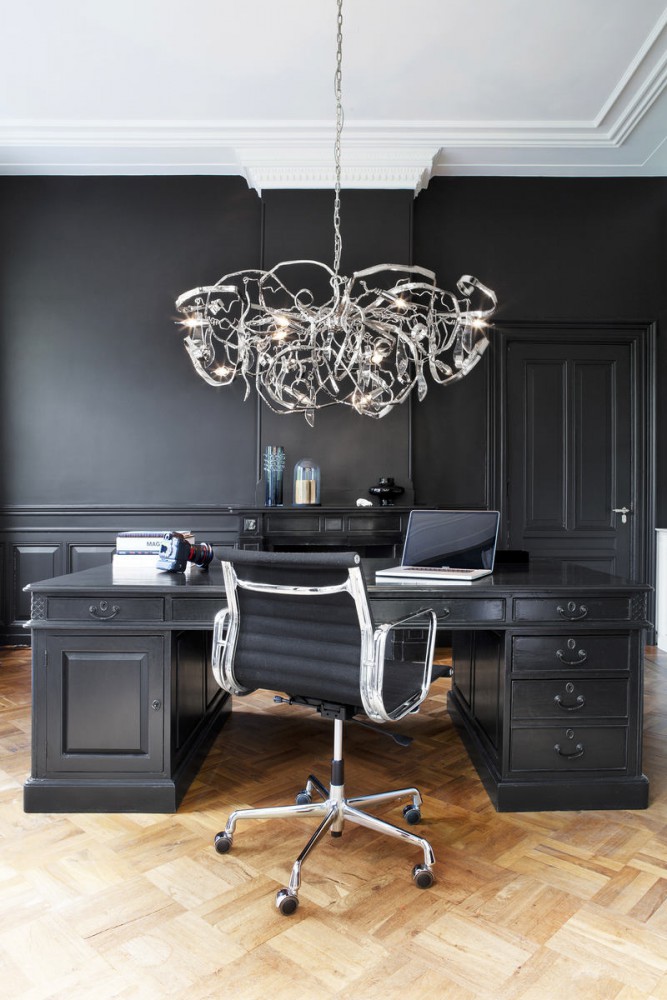
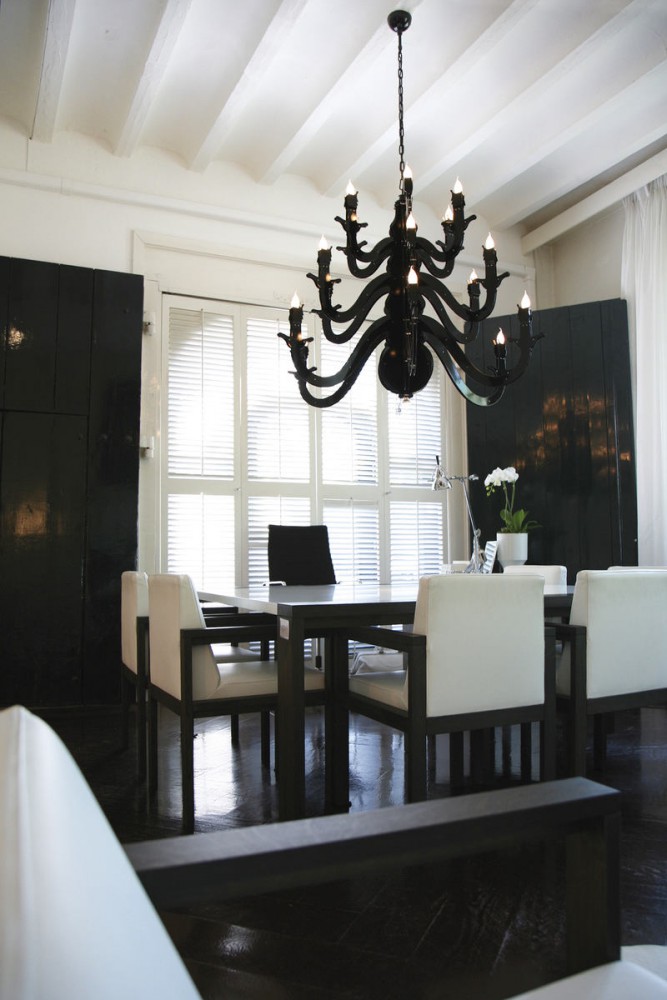 — - Can you describe how it is?happens, with a specific example? - Of course! Look, this floor lamp is one of the latest. Do you know what was the original, basic element? A stone and a stick. Why, you ask? Because we all came out of the Stone Age. These are the most deeply rooted, the most understandable, the clearest images for us. They are incredibly attractive.
— - Can you describe how it is?happens, with a specific example? - Of course! Look, this floor lamp is one of the latest. Do you know what was the original, basic element? A stone and a stick. Why, you ask? Because we all came out of the Stone Age. These are the most deeply rooted, the most understandable, the clearest images for us. They are incredibly attractive.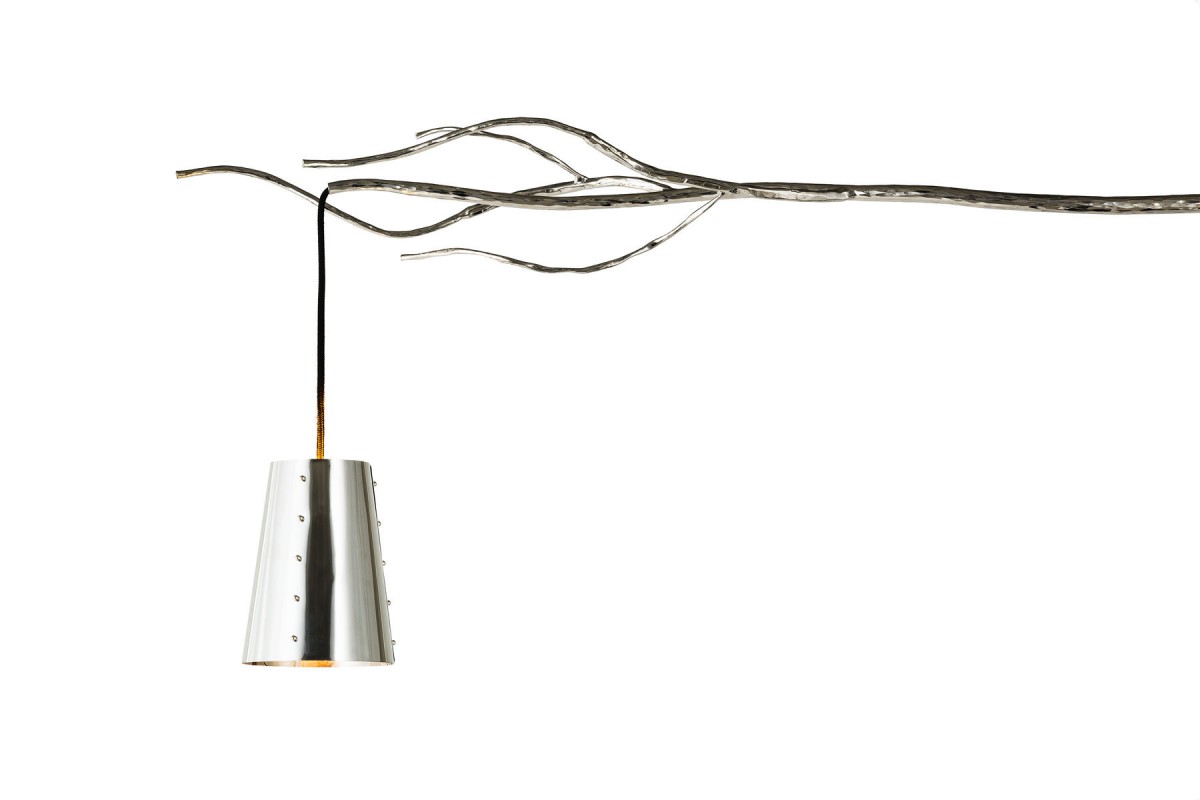
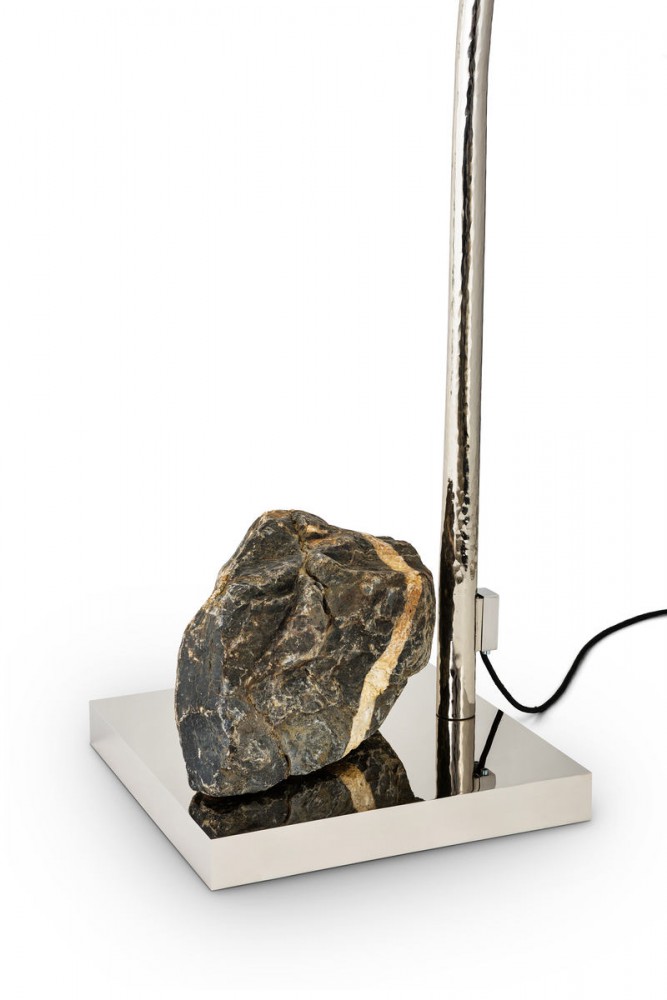
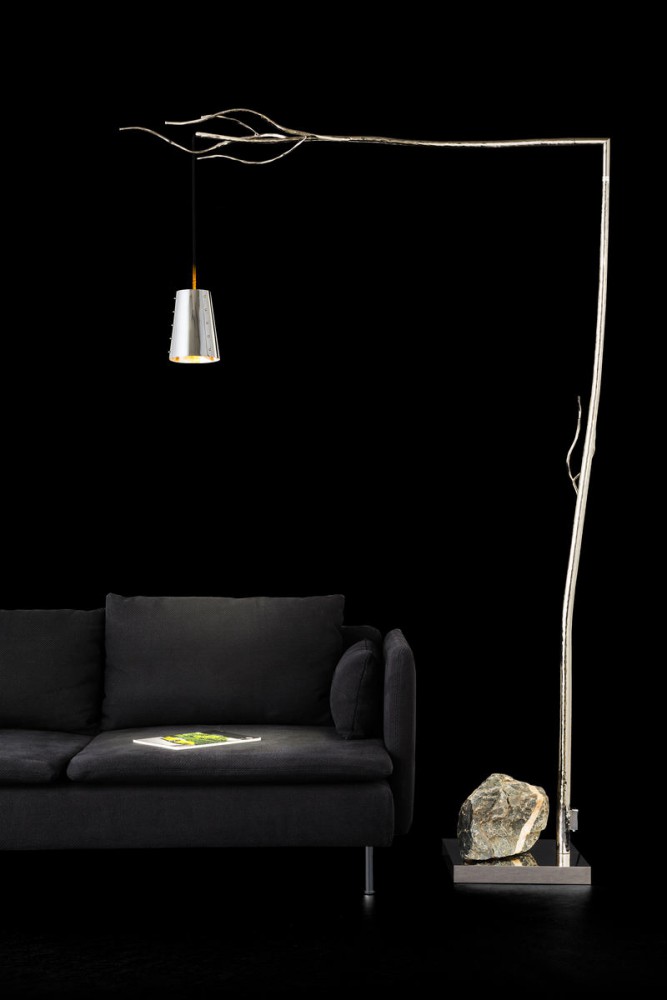
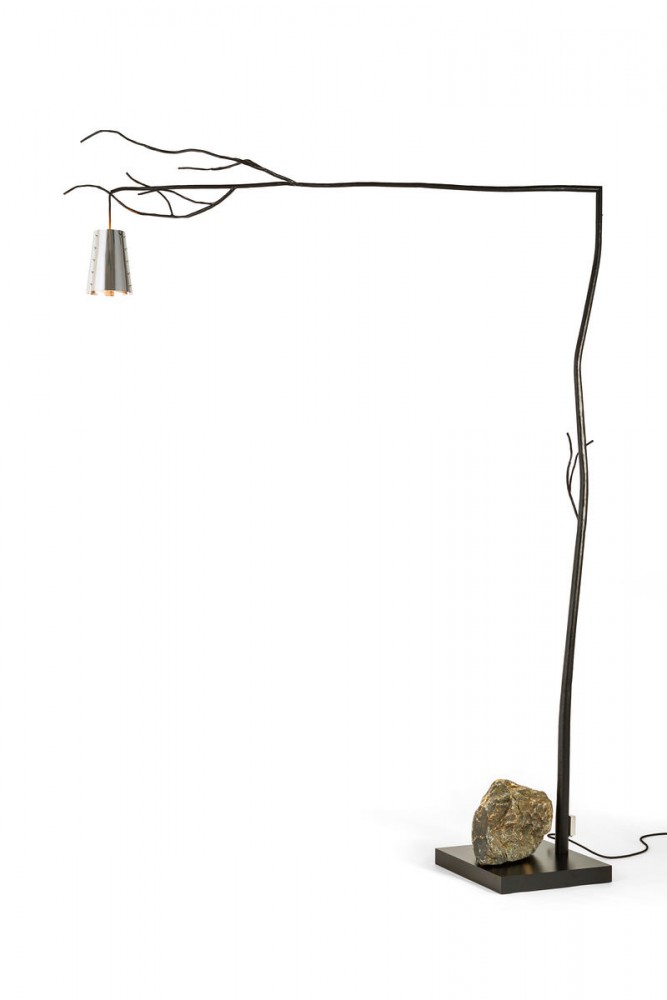
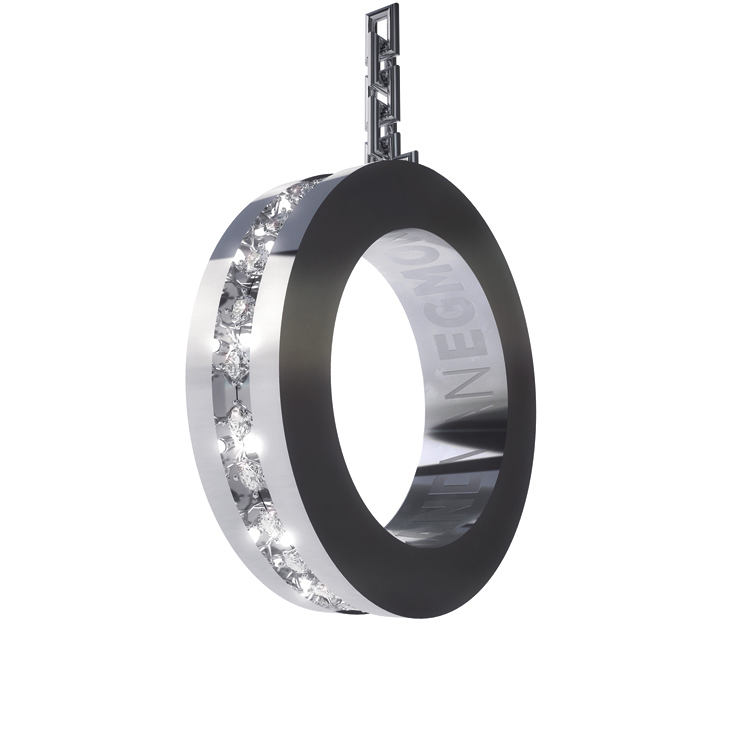

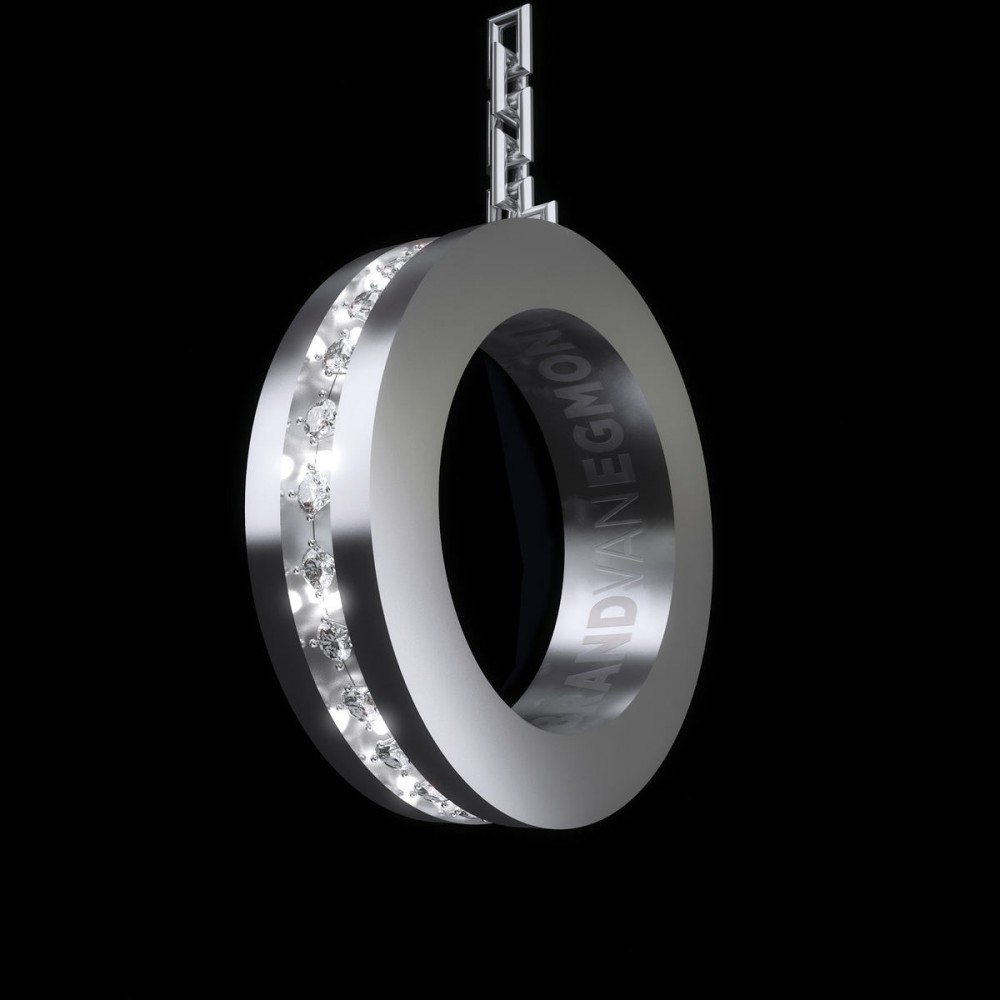 - Do you like working with metals?isn't it? — — In general, yes, exactly. But as a designer, I love challenges, as they are now called — this can also become a source of inspiration. Victoria and Arthur — one form and two models in the collection — are just such a case. — — Is it the same lamp? — — Different. But the architecture, the construction of the object is the same. They are just dressed in different dresses. You know that crystals are very fashionable in the Middle East. But it is important not to overdo it with them — a little bit too much and it turns out kitsch. There was demand and there were requests, including to me. And although I am not a big fan of crystals, I was interested in doing a good job. And I did. This chandelier with crystals — very feminine — was named Victoria. And this one, dressed in armor, became Arthur — it is masculine. Feminine and masculine principles — you see, again fundamental images for the human personality, archetypes.
- Do you like working with metals?isn't it? — — In general, yes, exactly. But as a designer, I love challenges, as they are now called — this can also become a source of inspiration. Victoria and Arthur — one form and two models in the collection — are just such a case. — — Is it the same lamp? — — Different. But the architecture, the construction of the object is the same. They are just dressed in different dresses. You know that crystals are very fashionable in the Middle East. But it is important not to overdo it with them — a little bit too much and it turns out kitsch. There was demand and there were requests, including to me. And although I am not a big fan of crystals, I was interested in doing a good job. And I did. This chandelier with crystals — very feminine — was named Victoria. And this one, dressed in armor, became Arthur — it is masculine. Feminine and masculine principles — you see, again fundamental images for the human personality, archetypes.
 — - I know that you have a lot andfans and clients in Russia. How do you work with Russians? What do they order? — You know, the first time I encountered a special order from Russia — and we often work on individual orders from private clients from all over the world — I was very pleasantly surprised. From Victoria and Arthur, Russians choose Arthur, just like me. And I like it. Over the past 10-15 years, your taste has developed incredibly. I say this without any irony. You lived for a very long time in a completely closed country, having almost no access to many cultural phenomena, thanks to which modern design exists as a school. It is simply amazing that you did not get stuck in traditional thinking on one hand and did not rush headlong into everything new that poured in from outside. The architectural objects that I have seen in Moscow lately show that Russians are bold people with their own vision and a developed artistic sense. This will only intensify in the future. I did one of my favorite works in Russia. Although I create very decorative-looking things, I am essentially a minimalist architect: what I like most is adding details to this specific minimalist environment, creating an art object in a clean space. That's what I did. And it was amazing, like a sudden splash in absolutely smooth and quiet water.
— - I know that you have a lot andfans and clients in Russia. How do you work with Russians? What do they order? — You know, the first time I encountered a special order from Russia — and we often work on individual orders from private clients from all over the world — I was very pleasantly surprised. From Victoria and Arthur, Russians choose Arthur, just like me. And I like it. Over the past 10-15 years, your taste has developed incredibly. I say this without any irony. You lived for a very long time in a completely closed country, having almost no access to many cultural phenomena, thanks to which modern design exists as a school. It is simply amazing that you did not get stuck in traditional thinking on one hand and did not rush headlong into everything new that poured in from outside. The architectural objects that I have seen in Moscow lately show that Russians are bold people with their own vision and a developed artistic sense. This will only intensify in the future. I did one of my favorite works in Russia. Although I create very decorative-looking things, I am essentially a minimalist architect: what I like most is adding details to this specific minimalist environment, creating an art object in a clean space. That's what I did. And it was amazing, like a sudden splash in absolutely smooth and quiet water. — — Which room do you like the most?what do you like in the house? — The dining room connected to the kitchen, of course. It’s the heart of the house. The hearth. The family. Friends dropping in for a glass of wine. The best place in the world. I’m rarely in the living room: I have nothing to do there, and I simply don’t have time to watch TV. But the kitchen-dining room is a completely different matter. Not only when we sit at the table together, but also when we cook, get ready for work, exchange news — it’s the warmest place in the house, the most alive. By the way, we have a great one for such a place. Show me?..
— — Which room do you like the most?what do you like in the house? — The dining room connected to the kitchen, of course. It’s the heart of the house. The hearth. The family. Friends dropping in for a glass of wine. The best place in the world. I’m rarely in the living room: I have nothing to do there, and I simply don’t have time to watch TV. But the kitchen-dining room is a completely different matter. Not only when we sit at the table together, but also when we cook, get ready for work, exchange news — it’s the warmest place in the house, the most alive. By the way, we have a great one for such a place. Show me?..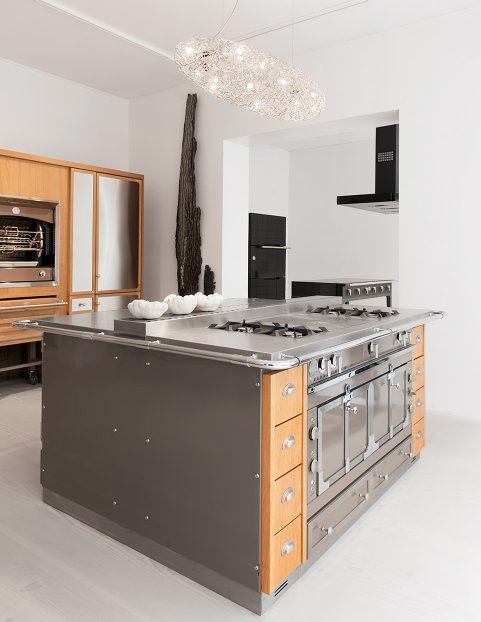
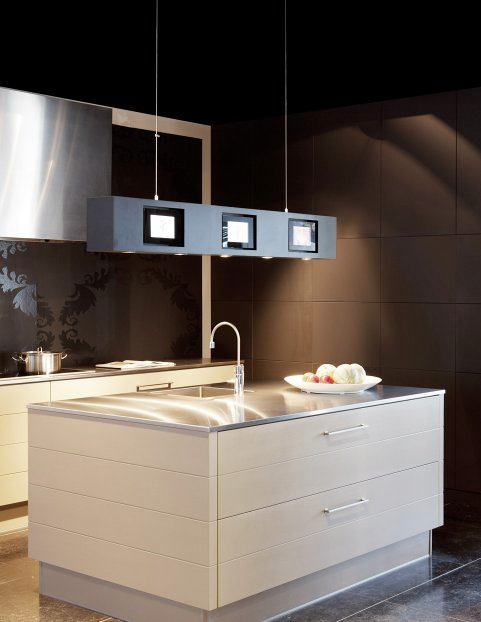
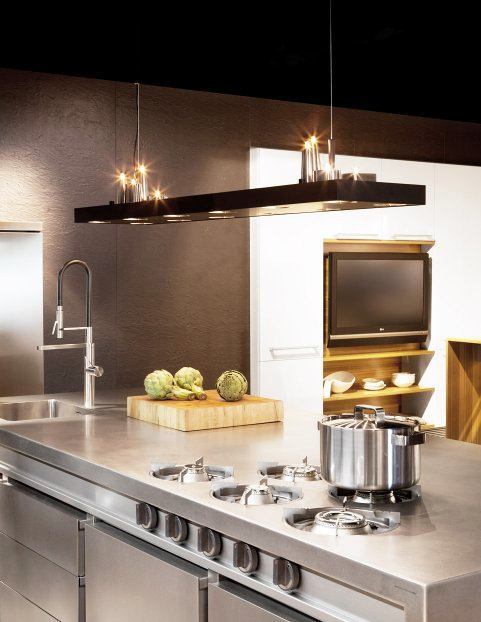
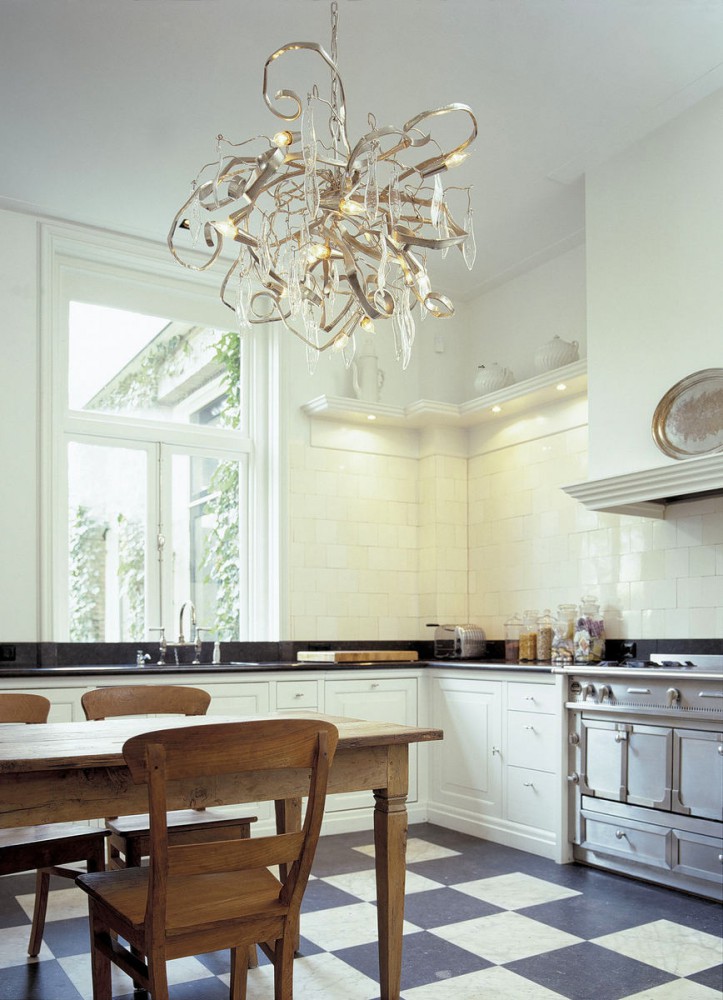 brandvanegmond.com
brandvanegmond.com
Light as art: an exclusive interview with the leading Dutch lighting designer

